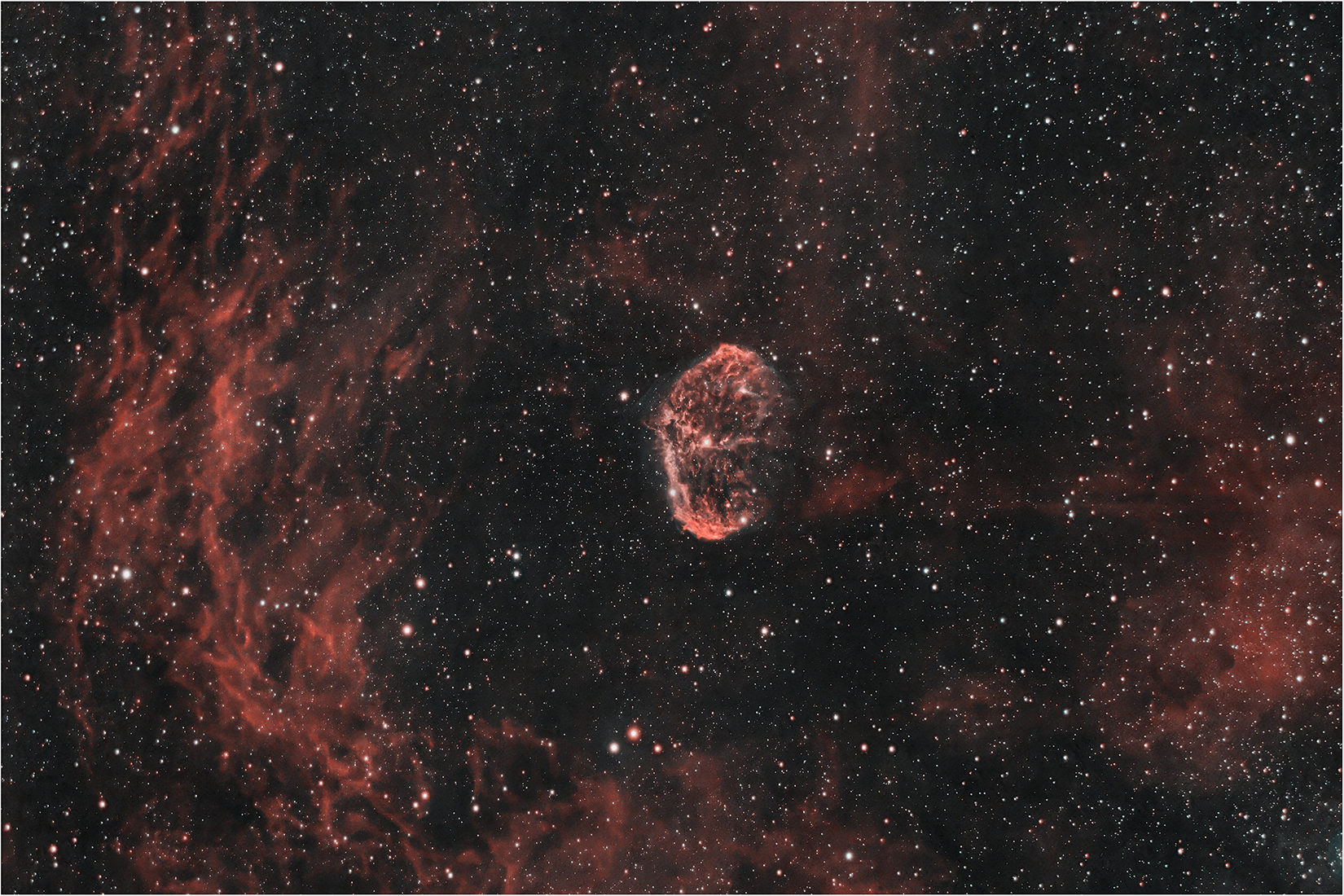The Crescent Nebula is a bubble of expanding gas which has been expelled from a very powerful star of a type known as a Wolf-Rayet star. During the star’s evolution it would have expelled material when it swelled into a red giant, and today the powerful solar wind from the star has caught up with the expanding shell of gas, energising it and creating shock wave patterns. The star is in the last stages of its development, and will likely erupt in a supernova explosion in the next few hundred thousand years.
The nebula lies at a distance of 5000 light years and was discovered in William Herschell in 1792. Despite its small size, it lies in the same direction as a region of extensive Hydrogen gas clouds, which though unrelated to the Crescent Nebula, adds interest to this region of the sky. That makes it an interesting target for a small refractor telescope.
The image above is an HOO colour palette, combining data gathered with an H-Alpha filter in the red channel with OIII filter data in the blue and green channels. The integration time is relatively short at just about 1 hour per filter. This gave some good signal in the H-alpha data, but does not provide enough OIII data, so this is a target to re-visit in the future.
Image Details
- Date: H-Alpha and OIII data – 11th Nov 2023.
- Telescope: Altair Astro 72EDF with 0.8 Focal Reducer. Focal Length: 345mm, Aperture: F4.8.
- Camera: Altair Astro 183MM Cooled Mono Astro Camera at Gain 100, Offset 40, Temp -10degC.
- Filters: H-alpha – Baader 7nm H-alpha 2 inch filter. OIII – Baader 8.5nm 2 inch filter
- Mount: Skywatcher HEQ5.
- Guide Scope: Altair Astro 60mm.
- Guide Camera: QHY5LII.
- Guide Camera: QHY5LII.
- Exposure Details: H-alpha – 15 x 300s (1hr 15min). OIII – 12 x 300s (1hr)
- Total Integration Time: 2hr 15min.

